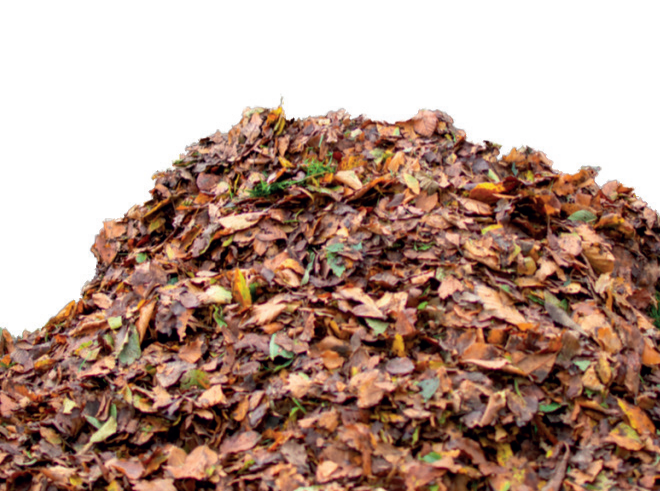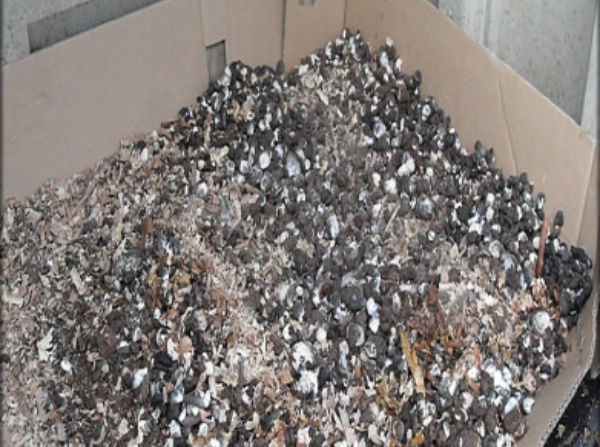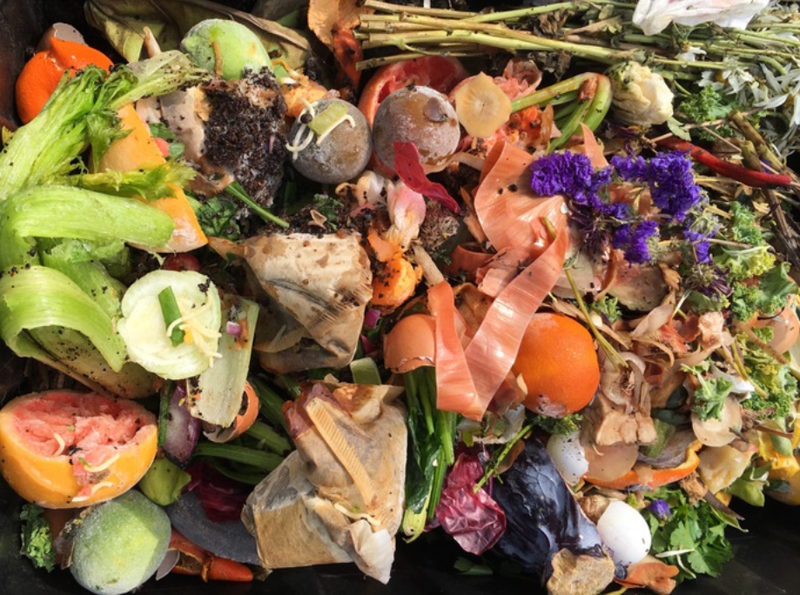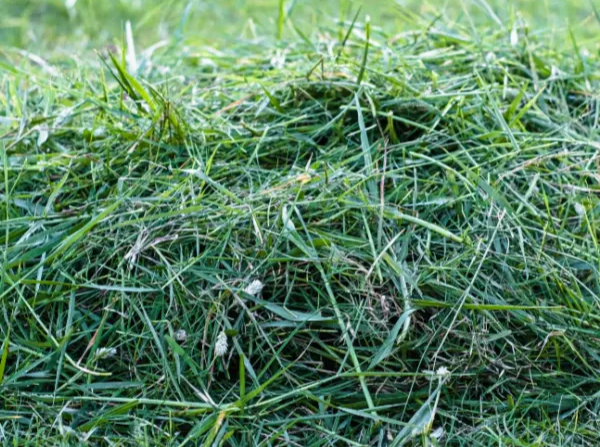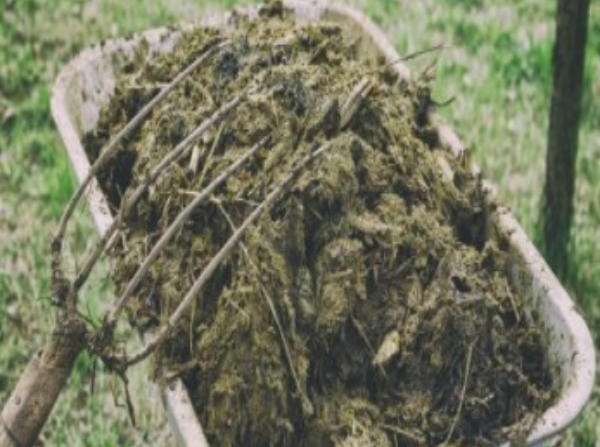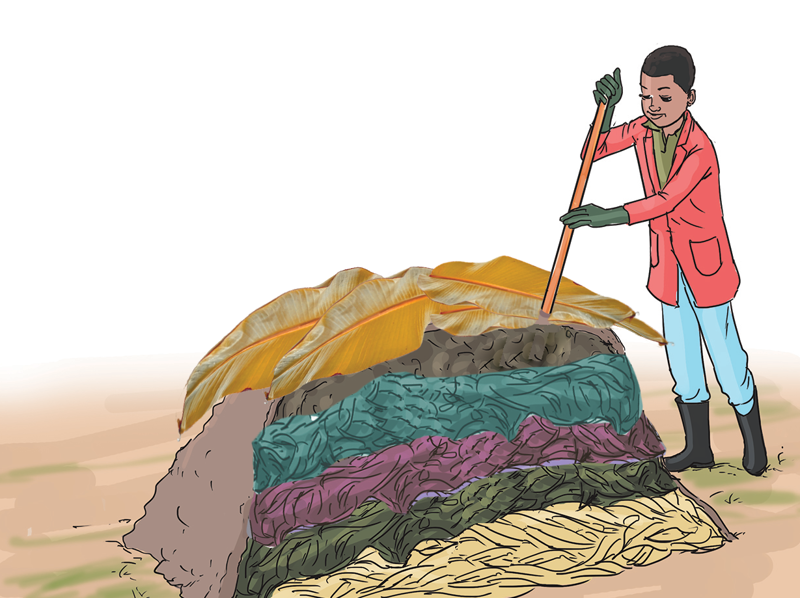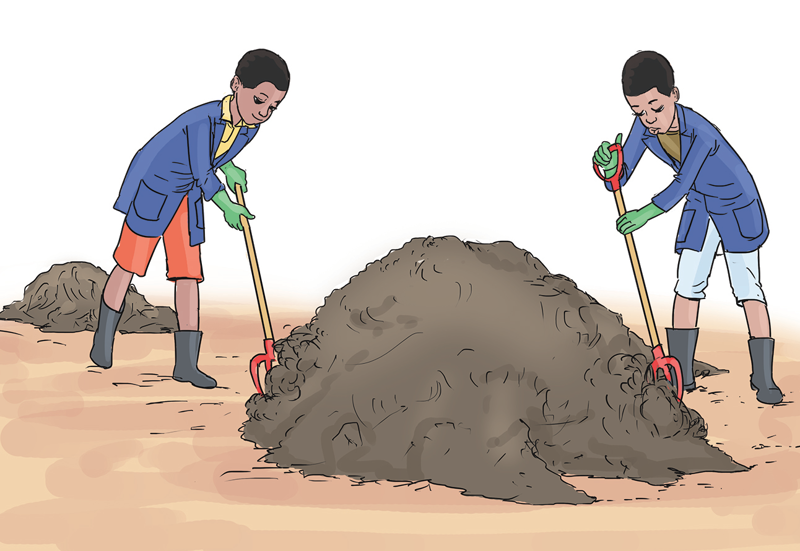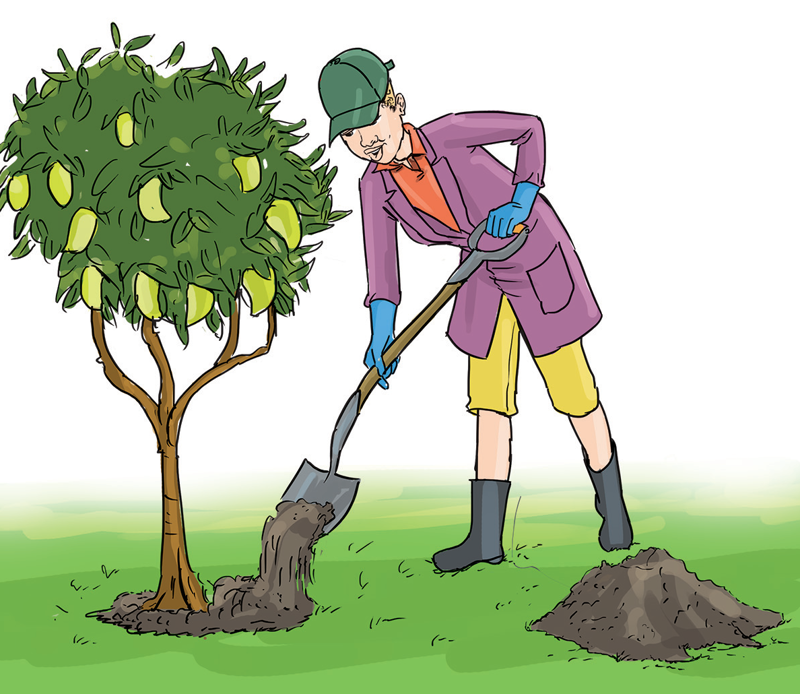Conservation of resources
A resource is anything that is useful to human beings. For example, soil, water and fuel are necessary resources for agricultural and household uses. Such resources can be exhausted rapidly if they are overused. Consequently, human beings, animals and the environment in general will be affected. In this strand, we will learn how to conserve soil, water, fuels and wild animals in our environment in order to meet our current and future needs.
Soil Conservation
Soil is the main medium through which plants grow. Soil supports plants by holding their roots firmly. Soil also supplies the plants with air, water and nutrients which are necessary for growth. Animals such as cattle, goats and sheep eat grass which grows on soil. In addition, soil is home to many animals such as moles, mice and some insects.
To provide crop requirements, the soil should be fertile. We will make compost manure using heap method for use in the garden. How can composting help to conserve our environment?
